What's New
Displaying results 3101 - 3110 of 4914

Resource | Publications,
In 2014, the Global Fund’s New Funding Model (NFM) will begin operating. Inclusiveness of civil society and key affected populations (KAP) (including men who have sex with men (MSM) and transgender people) is a key feature of the NFM. It is also one of the main criteria in assessing whether funding applications are robust. Country Dialogue is the term used by the Global Fund to describe the inclusive, ongoing consultative processes at the country level that is meant to inform all stages of the NFM process. Therefore, the country dialogue process presents a significant opportunity for civil society organisations representing MSM and transgender people to be meaningfully involved in all the stages of the NFM.
This resource guide is designed to assist civil society organisations in understanding the NFM and effectively engaging in country dialogue through all the key stages of the NFM.
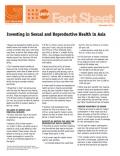
Resource | Fact Sheets,
Sexual and reproductive health services enable women and couples to have the number of children they want, when they want them; to deliver their babies safely and have healthy newborns; and to have healthy sexual lives, free from HIV and other sexually transmitted infections (STIs).
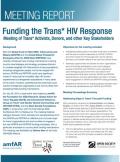
Resource | Publications,
Objectives for the meeting included:
- Highlighting existing data on the state of the trans* movement and the level of current investments by GFATM, PEPFAR, and other funders for HIV-focused trans* service delivery, advocacy, and research efforts at the local and national levels.
- Identifying opportunities and barriers for trans* organizations and communities participation in the country dialogue process of GFATM’s and PEPFAR’s country operational plans Strategizing about short-term and medium-term concrete actions that trans* activists, GFATM and PEPFAR representatives, and other stakeholders can take to increase trans* engagement in GFATM and PEPFAR funding processes.
- Establishing mechanisms for ongoing dialogue between trans* activists and representatives from GFATM and PEPFAR.
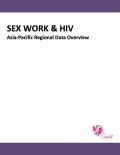
Resource | Data Sheets,
This Regional Data Overview presents regional data on sex work that is available as it pertains to HIV epidemiology, risk behaviours and vulnerability factors.
Commercial sex is the primary mode of HIV transmission in many Asian countries: where more people engage in commercial sex than in any other high-risk behaviour. An estimated 0.5%-15% of men pay for sex across the region. These men are one of the key determinants in both the spread and magnitude of HIV epidemics in the region, since they are the biggest single group that transmits HIV to their intimate partners.
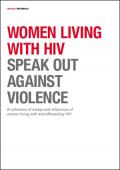
Resource | Publications,
Women living with HIV have a unique perspective on the AIDS epidemic. Similarly, women who have personally experienced violence can inform the debate on how to stop violence against women in a way that no others can. Together, they can provide valuable insight and experiences to end the AIDS epidemic and violence against women.
This collection of essays by women living with and affected by HIV sheds light on the experiences of women living with HIV in overcoming and addressing violence against women.
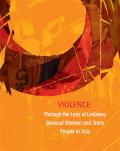
Resource | Publications,
Lesbians, bisexual women and transgender (LBT) individuals in Japan, Malaysia, Pakistan, the Philippines and Sri Lanka face violence and exclusion in every sphere of their lives. This violence is fueled by laws that criminalize same-sex relations and gender non-conformity and encouraged by governments who tolerate, endorse, or directly sponsor the violent clamp-down on those who do not follow prevailing norms on sexual orientation, gender identity and gender expression.
This is the main finding from research coordinated by the International Gay and Lesbian Human Rights Commission (IGLHRC) and conducted over a two-year period by women’s rights, sexuality rights and gender rights activists based in Japan, Malaysia, Pakistan, Philippines and Sri Lanka. The researchers uncovered high levels of family violence perpetrated against LBT individuals as well as widespread discrimination in education, health and work sectors.

Resource | Publications,
This report examines the prevalence and the factors associated with various types of violence against women and girls in South Asia (Afghanistan, Bangladesh, Bhutan, India, Maldives, Nepal, Pakistan, and Sri Lanka). The report also highlights the gaps where intensive research or interventions might be undertaken. Its focus, themes, and organization, as well as its content and analyses, have benefited greatly from consultation, guidance, and direct inputs from experts in the public, nongovernmental organization (NGO), private, donor, and research sectors of South Asia. This report is one component of the World Bank’s regional program, launched in January 2013, to attend to issues of gender-based violence in its operations, analytics, and collaborative work with other practitioners in South Asia.
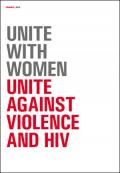
Resource | Publications,
Violence against women is a violation of their human rights. It has profound psychological and physical effects that can result in permanent disability and death. More than one in three women become victims of violence in their lifetime. According to WHO, nearly one third of all women have been physically and/or sexually violated by their intimate partner and almost 40% of all murders of women worldwide are committed by their partners.
As recognized in the Universal Declaration on Human Rights and reaffirmed in multiple international conventions and regional agreements, all human beings have the right to bodily integrity and to be free from violence. In 2011, United Nations Member States recognized the link between HIV and violence against women, with a call to end gender-based abuse and violence.
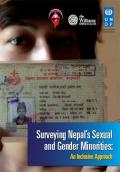
Resource | Publications,
The survey attempted to take advantage of Nepal’s attempt to include a third gender category in its national census, the first such attempt in the world. Nearly 1,200 respondents were recruited by trained BDS outreach workers whose aim was to study the identity, demographics, and experiences of sexual and gender minorities in Nepal. The study participants came from 32 of Nepal’s 75 districts, spoke Nepali, Bhojpuri, and Maithill, were primarily Hindu, and included individuals from 150 caste and ethnic groups.
The survey reveals that LGBT people in Nepal continue to face a wide range of obstacles as individuals and as a community. These challenges include widespread bullying in schools, lack of protection from discrimination by employers, paucity of programming to address the reproductive health needs of lesbians, and the lack of sensitive HIV healthcare for transgender women and gay men who are at exponentially higher risk of HIV infection than the general population.

Resource | Publications,
The discourse on gender biased sex selection in India has evolved over time from the realm of private spaces to that of public policy. India’s experience in dealing with the issue offers many valuable lessons for the global community. This assumes special significance given the increasing imbalance in sex ratios in the early age groups observed in countries in South, East and Central Asia, and Eastern Europe.
The study maps existing evidence on gender biased sex selection in the Indian context, weaving in significant social debates and policy developments that have influenced perceptions, and pathways to action. It offers practical suggestions to advance the path of critical inquiry by focusing on different domains such as family and household, education, labour and employment, and on institutions that directly or indirectly aid or combat the practice of sex selection.





